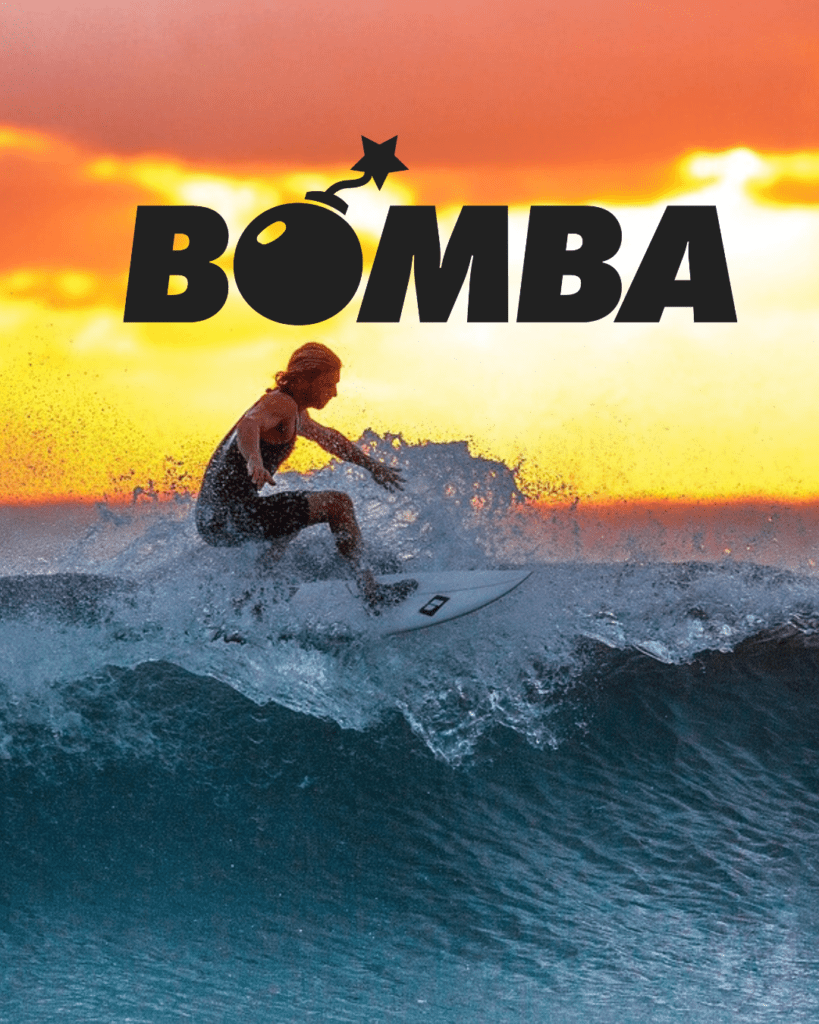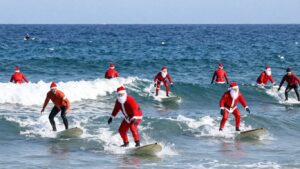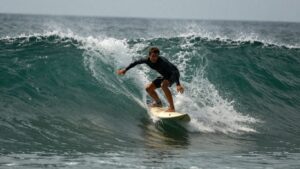Surfing is more than just catching waves—it’s a full-body test of athleticism. From paddling through currents to popping up fast and maintaining control on the face of a wave, your body needs power, stability, and stamina. That’s where surf fitness training comes in. By focusing on strength, balance, and endurance, you can surf longer, recover faster, and progress with confidence.
In this guide, we break down how to train like a surfer, whether you’re chasing barrels or just starting out.
Why Surf Fitness Training Matters
A surf session might look like bursts of fun from the beach, but in reality it’s hours of paddling, duck-diving, and explosive movements. Without proper fitness, surfers often hit walls: arms burn out, legs cramp, pop-ups slow down.
Building a surf-specific fitness routine helps you:
- Paddle longer without fatigue
- Improve balance and stability on the board
- Generate explosive power for turns and takeoffs
- Reduce injury risk on reef, rock, or wipeouts
- Keep surfing well into your later years
Surfing is as much endurance as it is agility—and the fitter you are, the more waves you’ll catch.
Strength Training for Surfers
Strength is the engine that drives every movement in the water. You don’t need bodybuilder muscles, but functional, lean strength that transfers to paddling, popping up, and carving.
Key Areas to Train:
- Upper Body: Push-ups, pull-ups, resistance band rows. These mimic paddling and help you power through waves.
- Core: Planks, rotational twists, hanging leg raises. A strong core keeps you stable on your board.
- Lower Body: Squats, lunges, jump squats. Explosive leg power makes your takeoff sharp and your turns tighter.
Pro Tip: Train explosively. Plyometric push-ups or box jumps translate directly into faster pop-ups.
Balance Training for Surfers
Balance is non-negotiable in surfing. The ocean is unstable, so your training should mirror that.
Best Balance Drills:
- Bosu Ball Workouts: Squats and push-ups on a Bosu ball simulate the instability of a surfboard.
- Single-Leg Movements: Deadlifts, hops, and balance holds train coordination.
- Surf Skates & Balance Boards: Off-water tools that mimic the motion of surfing.
Practicing balance daily—even five minutes—pays off massively once you’re back in the lineup.
Endurance Training for Surfers
Long surf sessions require cardiovascular fitness. If you gas out in 20 minutes, you’ll miss the best waves.
How to Build Surf Endurance:
- Interval Paddling: Practice sprint paddles in a pool or flat water. Mimic the stop-and-go rhythm of surfing.
- Swimming: Boosts lung capacity, breathing control, and water confidence.
- Cardio Cross-Training: Running, rowing, or cycling for general aerobic fitness.
Combine steady cardio with explosive intervals, just like a real surf session.
Surf Fitness Training at Home
You don’t need a fancy gym to train like a surfer. A mat, resistance bands, and maybe a balance board are enough.
Sample At-Home Circuit (3 Rounds):
- 15 push-ups
- 20 bodyweight squats
- 30-second plank
- 10 burpees
- 20 seconds balance hold on one leg
This simple circuit keeps your body surf-ready year-round.
Recovery and Flexibility
Strength and stamina are useless if your body breaks down. Recovery is essential for surfers pushing limits.
- Stretching & Yoga: Focus on shoulders, hips, hamstrings, and back. Surf yoga is ideal for flexibility and breath control.
- Foam Rolling: Prevents tightness in paddling muscles.
- Rest & Nutrition: Eat whole foods, hydrate, and sleep deeply to recharge.
A healthy body means more consistent surf days with fewer injuries.
Bringing It All Together
Surf fitness training isn’t about looking ripped—it’s about being functional, fluid, and resilient in the water. By combining strength, balance, endurance, and recovery, you’ll transform your surfing experience.
The ocean rewards those who prepare. Next time you paddle out, you’ll feel sharper, stronger, and ready for whatever the lineup throws your way.


![[Carissa Moore] surfing a large wave, mid-air.](https://bombasurf.com/wp-content/uploads/2025/12/b6390cefthumbnail-300x169.jpeg)





